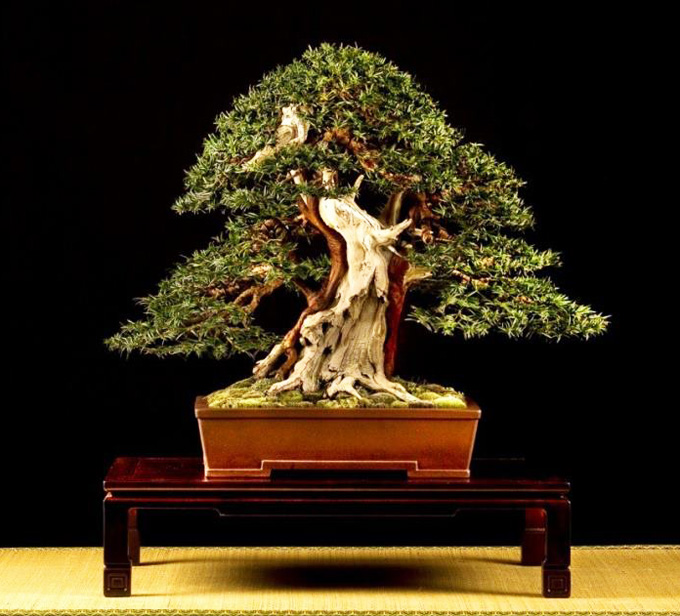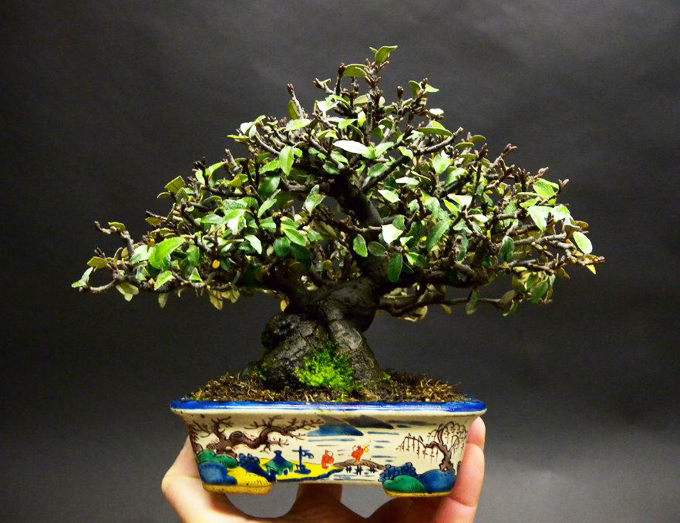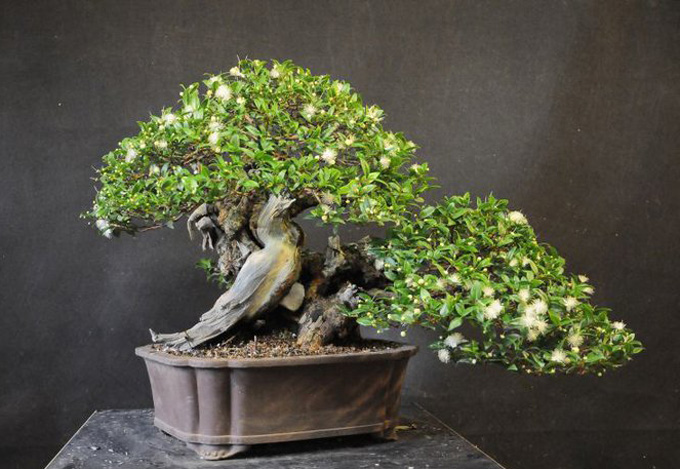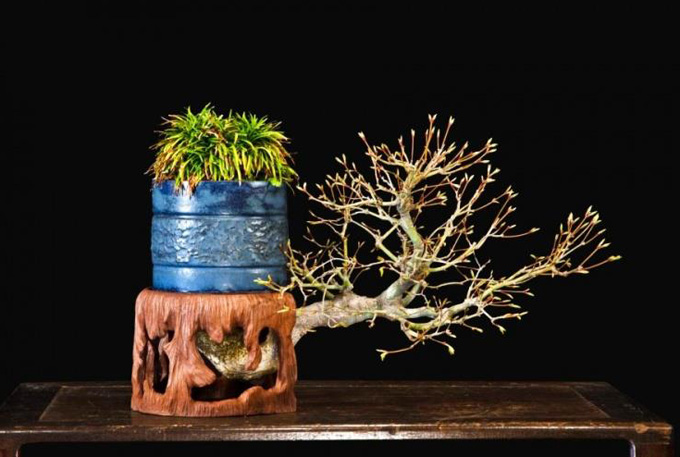 Just couldn’t resist posting yet another yew (there have been several lately). But, as you can see, it’s not just any yew. I found it here with this caption. Taxus Baccata (English yew) by Stefano Frisoni from Italy.
Just couldn’t resist posting yet another yew (there have been several lately). But, as you can see, it’s not just any yew. I found it here with this caption. Taxus Baccata (English yew) by Stefano Frisoni from Italy.
Newsflash! I’ve been having a strange feeling that I’ve seen this tree somewhere before. Turns out it was right here on Bark 17 months ago. Oh well, this photo is much better.
Shameless promotion
There are three reasons why I spend so much time on Bonsai Bark. To spare you the boredom, I’ll skip the first two… the third is to promote our Stone Lantern website. I’m mentioning it now because I just went through and lowered a bunch of prices on bonsai tools and bonsai books (some other stuff too) for what we’re calling our Year End Sale.
Enough said. I hope you continue to enjoy Bonsai Bark right though 2013 and beyond.
 Nice tree. Fantastic pot! Eleven years from stump by Mario Komsta. I’m going to guess that it’s an Ilex.
Nice tree. Fantastic pot! Eleven years from stump by Mario Komsta. I’m going to guess that it’s an Ilex.
 Congrats! This Shimpaku planting on a slab by Mariusz Folda just qualified to be exhibited at Noelanders Trophy 2013. Though you can’t tell for sure (unless your name is Mariusz), my guess is that this is two separate trees, rather than a twin-trunked bonsai. In any case, I like the way the trunks complement each other with their similar deadwood and live veins. I also like the way the crowns have been opened up just a bit (rather than the perfectly full and smooth look you sometimes see on Shimpaku), though I wouldn’t mind seeing them opened up a bit more so you could see a little more of the branching.
Congrats! This Shimpaku planting on a slab by Mariusz Folda just qualified to be exhibited at Noelanders Trophy 2013. Though you can’t tell for sure (unless your name is Mariusz), my guess is that this is two separate trees, rather than a twin-trunked bonsai. In any case, I like the way the trunks complement each other with their similar deadwood and live veins. I also like the way the crowns have been opened up just a bit (rather than the perfectly full and smooth look you sometimes see on Shimpaku), though I wouldn’t mind seeing them opened up a bit more so you could see a little more of the branching.
 I haven’t seen that many real Myrtle bonsai and of the ones I have seen, this one that belongs to Mauro Stemberger is by far the most impressive. Though the flowers aren’t necessary to appreciate the tree, they do add a nice touch.
I haven’t seen that many real Myrtle bonsai and of the ones I have seen, this one that belongs to Mauro Stemberger is by far the most impressive. Though the flowers aren’t necessary to appreciate the tree, they do add a nice touch.
 Upside down bonsai. This Japanese maple and Mondo grass planting turned up in Bonsai Empire’s facebook photos with this caption: Very original display of a Japanese Maple by Bill Valavanis! Pot and ceramic root stand by Dale Cochoy.
Upside down bonsai. This Japanese maple and Mondo grass planting turned up in Bonsai Empire’s facebook photos with this caption: Very original display of a Japanese Maple by Bill Valavanis! Pot and ceramic root stand by Dale Cochoy.
 Robert Steven’s Christmas card just a day late (he posted it in plenty of time, I’m the one that’s lagging). You can look for more of Robert’s excellent bonsai critiques in 2013.
Robert Steven’s Christmas card just a day late (he posted it in plenty of time, I’m the one that’s lagging). You can look for more of Robert’s excellent bonsai critiques in 2013.
I’ll leave you with this treatise on dormancy by Ken Schultz from the Columbus Bonsai Society’s December Newsletter
Dormancy – What Happens to Your Bonsai in Winter?
W e know that the deciduous trees in our yards and yes our bonsai that are deciduous, drop their leaves after sufficient shortening of the days and cooler temperatures arrive. Even my semi-hardy trees may drop their leaves before I finally relegate them to artificial lighting in my basement. In preparation, trees store sugars produced through photosynthesis, so that when spring arrives they have the strength to open their buds to grow new leaves to begin photosynthesis again. Dormancy is a self -preservation defense mechanism that protects them from the savages of winter weather.
Conifers appear to defy logic by retaining most of their foliage, but under severe enough conditions, their photosynthesis stops too. To minimize dehydration, old needles or foliage browns and drops off. They also store sugars for the spring push. Unlike deciduous trees though, they carry on a low level of photosyn-thesis when the winter temperature rise (above 38) with the needles that they retain. This is also, why they can use poo balls to feed them at a low level over the winter months.
Tropicals seem to continue to grow all year round. But even they need a cooling/rest period. Most growth pauses by December and then gains speed about February after a couple of months of rest. For all three types of trees this period of rest is almost as important as the period of growth. I can recall when I be-gan bonsai and did not understand that without this rest a tree will eventually exhaust itself and become weaker and weaker perhaps even die if they do not go through this dormancy period.
A former club member said she had kept her juniper continuously in the house for six years before it weakened and died. The big exception is Jack Wikle, who has kept his mame’ collection under lights continu-ously for over 20 years. His technique is described in the Brooklyn Botanical Garden’s Indoor Bonsai book in the chapter called, One Grower’s Tips for Success with Indoor Bonsai. Three of Jack’s secrets are; 1) put the lights as close as possible (no more than 6” above them) and put them on a timer for 16 hours a day, 2) use a light fertilizer solution every time you water (he mentions Peter’s 20-20-20, at 1 tsp./5 gal of water.) and 3) use a sand bed or folded towel under the pots as a pot should never stand in water. His soil mix is builder’s sand, sphagnum peat and sandy loam garden soil in a 1:1:1 blend. If you haven’t seen Jack Wikle’s amazing mame’s they are all less than 6” tall. Jack only treats his mame’ bonsai in this manner, he has or had hardy larger bonsai outdoors. (Jack recently sold many of his larger trees.)
Interestingly some species of tropicals seem to respond to shorter days and cooling weather by bloom-ing. So don’t be surprised if your Bougainvillea, Rosemary or Serrisa bloom in late fall or early winter. Also if you’re doing it right some may bloom in February when they think spring has arrived. I had an Azalea that was bought for Valentine’s Day that bloomed every year in February. This clued me that the tropical period of dormancy was over. (I over-watered it to death) So be careful with your indoor bonsai, their water use dur-ing the winter month may be much less than during the summer.
Ken Schultz Columbus December Newsletter
OK I give up…where is the soil for the upside down maple and how is it watered?
Also, nice myrtle. We can see that it’s related to Metrosideros polymorpha, Ohi’a lehua. The principle rainforest tree around these parts. (Volcano, Hawaii)
Wayne,
Per your comment (I don’t mean to be a pest!):
“Nice tree. Fantastic pot! Eleven years from stump by Mario Komsta. I’m going to guess that it’s an Ilex.”
This is a Sylverberry or Elaeagnus. Since the tree is lacking foliage and the one it has is just coming out, I can’t tell which kind it is.
Warm regards,
Jose Luis
As a rookie member of the Ann Arbor Bonsai Society I was privileged to see Jack Wilke’s mame and other trees several times. Jack has a true eye for bonsai. But the most amazing thing about Jack’s trees is the number that were NOT ‘tropical’, but ‘temperate’, such as Juniper, Azalea, Cotoneaster, Boxwood and several others. I call these AC-DC trees, they go both ways outdoor and indoor. Most of these trees are evergreen or semi – evergreen depending on how far north or south you live. They may drop almost all, but not quite all their leaves in winter, but stay evergreen under lights in the house. The azalea would blossom at any time of the year and Jack would usually bring one into the January or February meeting when it was in bloom. Truly amazing!
Bob Thatcher
Asheville, NC
Hi Jose,
That’s why I like to guess. Brings you and all your knowledge into the mix.
Thanks amigo and Happy New Year!
-w
Hi Bob,
Thanks for the info on Jack’s trees. Do you know a good link to view some? I could find info about him in 5 or 6 places, but no photos of trees that are positively listed as his.
-w
Hi Bruce,
Well, I’d say that the tree is growing out of the bottom of the blue pot. So the soil is actually above the base of the trunk, and of course it’s watered from above where the mondo grass is. This isn’t the first time I’ve seen a tree emerge from the bottom of a pot, but it’s certainly not very common.